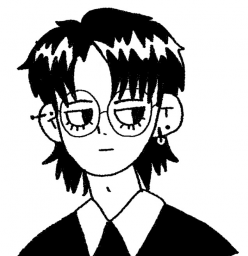Brief
The project brief was to find a document and explore the portrayals of indigenous and First Nation peoples in your chosen locale, and provide a reflection of how Indigeneity and Indigenous people represented in these documents make up our knowledge and understanding of the history of education.
Preface
Having grown-up and spent most of my adolescent life in Taiwan and its education system, we naturally learned about Taiwanese history and culture in our elementary to high school curriculum. The long history of colonization by Portuguese, Dutch, Spanish and Japanese, as well as the settlement of Chinese immigrants resulted in much tension and conflict amongst the diverse groups of people inhabiting the small island.
It wasn’t until coming to Vancouver and learning more about the Indigenous history and the overall activism surrounding reconciliation did I have the lens to reflect back on the ways I have learnt about Taiwanese history, specifically re-thinking the narrative of the curriculum and portrayals of Indigenous peoples, colonizers and settlers in relation with each other.
Project
The “document” I decided to choose for this project is the Taiwanese 2011 film Warriors of the Rainbow: Seediq Bale directed by Taiwanese director Wei Te-sheng.
This film portrays the historical 1930 Musha Incident (霧社事件) of the Seediq (賽德克) people against the colonial Japanese forces in response to the long-term oppression. Due to the nature of the subject matter, it does have explicit depictions of violence, forced assimilation policies, dispossession of land and natural resources, armed conflict, etc. which was a reality for many of the indigenous communities under Japanese colonialization.
This film was shown in competition at the 68th Venice International Film Festival. I chose this film as it was seminal in terms of bringing Taiwanese colonial history and “representation” of Indigenous peoples of Taiwan onto the international stage, creating an entry point when it comes to learning and understanding more of history of Taiwan.
Throughout the film, I am constantly confronted with this question:
What are the underlying themes being driven in this narrative and what is assumed of the positionality of that perspective?
As a film involving conflict amongst many different groups — Japanese colonizers, Han Chinese settlers, and the indigenous Seediq people — understanding the historical and cultural context from each group is necessary.
Below is a brief glance at the historical context of Japanese colonial rules and assimilation policies imposed onto the indigenous peoples, including:
Status and categorization – varying degrees of “barbarians” 番 (fan)
-
- 生番 (sheng fan) : non-acculturated indigenous people; lived outside of administrative units
- 化番 (hua fan) : semi-acculturated indigenous people; lived outside administrative units
- 熟番 (shu fan) : acculturated indigenous people; treated with status en-par with Han Chinese as “natives of Taiwan”
Settler-Aboriginal Boundary 隘勇(yi yong)
The Japanese claimed all unreclaimed forest and mountain land in Taiwan as government property, denying the rights of indigenous people to their property, land and anything on the land. The Japanese colonizers reinforced the “settler-aboriginal boundary” that further restricted indigenous people’s living space.
Japanization “kominka” Era (皇民化運動)
After the Musha Incident, many new policies were put into place to control indigenous people and their resources, including assimilation through education, language and prohibition of indigenous cultural practices.
Naturally, the film garnered both praise and criticism. That being said, I believe the controversy is what creates an abundance of topics for critical conversation and discussion.
What are the underlying themes being driven in this narrative and what is assumed of the positionality of that perspective?
This rather broad/general/nebulous question not only generates discussion on the surface-level of media portrayal, historical narrative, but also in a self-referential way in terms of the critic needing to reckon with their own positionality and perspective through the act of critiquing.
As a student back then, we did not have the time nor space in the elementary, middle and high school curriculum to have a deeper and more nuanced understanding of historical events in general, not to mention having in-depth discussion on topics related to indigenous communities at all.
Living in Taiwan, there are traces of colonialism in everyday life. It is ingrained in the architecture, in the transportation system, historical documentation that is available to the rest of the world, and even the educational system itself. There is still a big gap in terms of restorative justice and the overall dissemination of the concept of truth and reconciliation and efforts of decolonization, and I believe the first step and front lines of this dissemination is starting within the classrooms in education.
